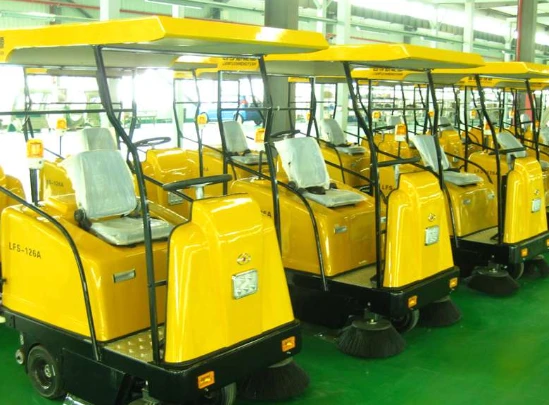
-
 Afrikaans
Afrikaans -
 Albanian
Albanian -
 Amharic
Amharic -
 Arabic
Arabic -
 Armenian
Armenian -
 Azerbaijani
Azerbaijani -
 Basque
Basque -
 Belarusian
Belarusian -
 Bengali
Bengali -
 Bosnian
Bosnian -
 Bulgarian
Bulgarian -
 Catalan
Catalan -
 Cebuano
Cebuano -
 China
China -
 China (Taiwan)
China (Taiwan) -
 Corsican
Corsican -
 Croatian
Croatian -
 Czech
Czech -
 Danish
Danish -
 Dutch
Dutch -
 English
English -
 Esperanto
Esperanto -
 Estonian
Estonian -
 Finnish
Finnish -
 French
French -
 Frisian
Frisian -
 Galician
Galician -
 Georgian
Georgian -
 German
German -
 Greek
Greek -
 Gujarati
Gujarati -
 Haitian Creole
Haitian Creole -
 hausa
hausa -
 hawaiian
hawaiian -
 Hebrew
Hebrew -
 Hindi
Hindi -
 Miao
Miao -
 Hungarian
Hungarian -
 Icelandic
Icelandic -
 igbo
igbo -
 Indonesian
Indonesian -
 irish
irish -
 Italian
Italian -
 Japanese
Japanese -
 Javanese
Javanese -
 Kannada
Kannada -
 kazakh
kazakh -
 Khmer
Khmer -
 Rwandese
Rwandese -
 Korean
Korean -
 Kurdish
Kurdish -
 Kyrgyz
Kyrgyz -
 Lao
Lao -
 Latin
Latin -
 Latvian
Latvian -
 Lithuanian
Lithuanian -
 Luxembourgish
Luxembourgish -
 Macedonian
Macedonian -
 Malgashi
Malgashi -
 Malay
Malay -
 Malayalam
Malayalam -
 Maltese
Maltese -
 Maori
Maori -
 Marathi
Marathi -
 Mongolian
Mongolian -
 Myanmar
Myanmar -
 Nepali
Nepali -
 Norwegian
Norwegian -
 Norwegian
Norwegian -
 Occitan
Occitan -
 Pashto
Pashto -
 Persian
Persian -
 Polish
Polish -
 Portuguese
Portuguese -
 Punjabi
Punjabi -
 Romanian
Romanian -
 Russian
Russian -
 Samoan
Samoan -
 Scottish Gaelic
Scottish Gaelic -
 Serbian
Serbian -
 Sesotho
Sesotho -
 Shona
Shona -
 Sindhi
Sindhi -
 Sinhala
Sinhala -
 Slovak
Slovak -
 Slovenian
Slovenian -
 Somali
Somali -
 Spanish
Spanish -
 Sundanese
Sundanese -
 Swahili
Swahili -
 Swedish
Swedish -
 Tagalog
Tagalog -
 Tajik
Tajik -
 Tamil
Tamil -
 Tatar
Tatar -
 Telugu
Telugu -
 Thai
Thai -
 Turkish
Turkish -
 Turkmen
Turkmen -
 Ukrainian
Ukrainian -
 Urdu
Urdu -
 Uighur
Uighur -
 Uzbek
Uzbek -
 Vietnamese
Vietnamese -
 Welsh
Welsh -
 Bantu
Bantu -
 Yiddish
Yiddish -
 Yoruba
Yoruba -
 Zulu
Zulu
Innovative GRP Duct Solutions for Efficient HVAC Systems and Airflow Management
Understanding the GRP Duct System An Innovative Approach to Air Distribution
The GRP (Glass Reinforced Plastic) duct system represents a significant advancement in the field of air distribution and HVAC (Heating, Ventilation, and Air Conditioning) systems. This innovative material, which is a composite made of fiberglass and resin, has gained popularity due to its unique properties and benefits over traditional duct materials such as metal or standard plastic. In this article, we will explore the advantages of GRP duct systems, their applications, and the reasons behind their growing adoption.
Advantages of GRP Duct Systems
1. Lightweight and Durable One of the primary benefits of GRP ducting is its lightweight nature. Compared to traditional metal ducts, GRP ducts are significantly easier to handle and install, which can lead to reduced labor costs and construction time. At the same time, they are exceptionally durable and resistant to corrosion, making them ideal for environments where moisture or harsh chemicals might be present.
2. Thermal Insulation GRP has excellent thermal insulation properties, which helps in maintaining desired temperatures in air distribution systems. This not only improves energy efficiency but also ensures a comfortable environment within buildings. The insulation properties of GRP help minimize heat loss or gain, thus reducing energy consumption and operational costs.
3. Smooth Internal Surface The inner surface of GRP ducts is generally smoother than that of metal ducts, which reduces frictional losses in the airflow. This characteristic leads to improved air handling efficiency and lowers the risk of dust and debris accumulation. Consequently, maintenance requirements are decreased, ensuring a longer system lifespan.
4. Design Flexibility GRP duct systems can be easily molded into various shapes and sizes, allowing for greater design flexibility in new construction and renovations. This adaptability enables engineers and architects to develop systems that perfectly fit the specific needs and constraints of a building.
grp duct system

5. Environmental Considerations As sustainability becomes an ever-increasing concern, GRP duct systems provide an eco-friendly alternative. They are often manufactured with recyclable materials and have a lower carbon footprint during production compared to traditional metal ducts. Additionally, the energy savings generated from improved efficiency can significantly contribute to a building's overall sustainability.
Applications of GRP Duct Systems
The versatility of GRP duct systems allows for their use in a wide array of applications. Common uses include
- Commercial Buildings In office buildings and shopping centers, GRP duct systems can efficiently manage air distribution while being lightweight and easy to install. - Industrial Facilities GRP ducts are ideal for environments with high humidity or corrosive substances, such as chemical plants or food processing facilities. - Marine Applications The resistance of GRP to moisture makes it a preferred choice for onboard ventilation systems in ships, where durability and weight savings are crucial. - Residential Projects Increasingly, homeowners and builders are opting for GRP ducting in new home constructions due to its efficiency and design flexibility.
Conclusion
The GRP duct system offers numerous advantages that make it a compelling choice for modern air distribution needs. Its combination of lightweight durability, energy efficiency, and design flexibility positions it as a leading alternative to traditional duct materials. As industries continue to prioritize sustainability and performance, the adoption of GRP duct systems is poised to grow, paving the way for innovative and environmentally friendly HVAC solutions. In conclusion, the GRP duct system not only enhances the operational efficiency of air distribution but also contributes to the broader goals of sustainability within the built environment.
Latest news
-
FRP Hood Durable & Lightweight Fiberglass Hood SolutionsNewsApr.29,2025
-
Heavy-Duty Jackhammers for Construction Work Powerful & Portable Electric Demolition ToolsNewsApr.29,2025
-
High-Strength Fiberglass Flanges FRP Blind & Custom Flange SolutionsNewsApr.28,2025
-
Fiberglass Pipe Flanges High-Pressure & Corrosion-Resistant SolutionsNewsApr.28,2025
-
FRP Fuel Tanks Durable Fiberglass & PP Composite Fuel Storage SolutionsNewsApr.28,2025
-
FRP Trough Covers Durable Industrial Protective SolutionsNewsApr.28,2025









